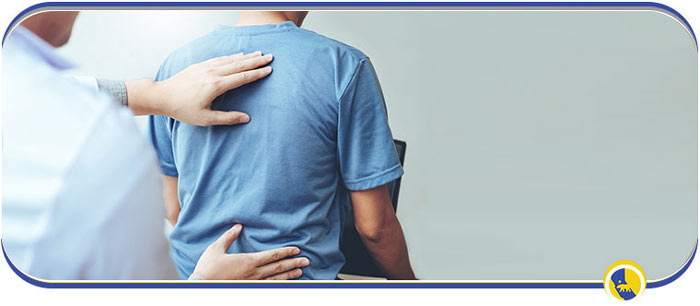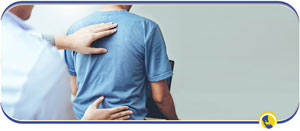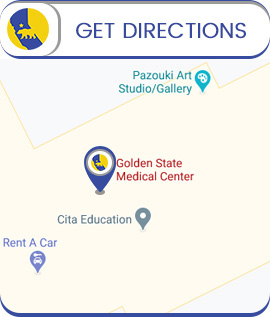Advanced Corrective Care Specialist in San Ramon, CA
Do you experience joint, muscle, or nerve dysfunction due to poor posture? Advanced Corrective Care is a medical treatment that aims to address the root cause of this issue, which is known as Crossed Posture Syndrome. At Golden State Medical Center, Dr. S. Scott Newman, D.C., and his team are ready to help you with an advanced corrective care program. Don’t let poor posture affect your life anymore, get the help you need today! For more information, contact us or request an appointment online. We are located at 2551 San Ramon Valley Blvd. Suite 108. San Ramon, CA 94583.


Table of Contents:
What is advanced corrective care and why do I need it?
What are the underlying causes of joint, muscle, and nerve dysfunction?
What are the lifelong benefits of the advanced corrective care program?
What does normal posture look like?
Incorrect posture is a common issue among adults, as the stresses of everyday life can make it challenging to maintain good posture habits. As a result, it is also common for adults to experience varying degrees of joint, muscle, and nerve pain or dysfunction at some point in their life. At Golden State Medical Center, we take good posture seriously while also understanding the challenges that keep us from maintaining it! That is why we are delighted to provide advanced corrective care programs to any adult suffering from joint, muscle, or nerve dysfunction due to postural irregularities.
Advanced corrective care is a type of medical treatment that aims to remedy a condition known as crossed posture syndrome. Medical scientists and researchers have identified crossed posture syndrome as one of the primary underlying causes of joint, muscle, and nerve dysfunction. Advanced corrective care seeks to remedy crossed posture syndrome by removing all unnecessary stresses on the spine through gait and posture correction, as well as balance, flexibility, and strength training.
With that in mind, you may need or be a prime candidate for advanced corrective care if you display any of the following symptoms:
• Chest pain and tightness
• Difficulty sitting for extended periods
• Fatigue
• Headache
• Increased outward curvature in the upper portion of your spine, containing your neck, upper back, shoulders, and chest
• Jaw pain
• Neck pain
• Numbness, pain, or tingling in the upper arms
• Rib pain and decreased range of motion
Rounded shoulders
• Shoulder blade visibly sits out instead of lying flat
• Sore shoulder blades
• Upper or lower back pain
• Weak abdominal, glute, and/or lower trapezoid muscles
• Your head is frequently in a forward-leaning position
While there are several possible causes of joint, muscle, and nerve dysfunction, crossed posture syndrome is one of the most prevalent underlying causes of joint, muscle, and nerve dysfunction. Crossed posture syndrome typically occurs when one muscle group becomes too tight. This tightening neurologically inhibits and weakens other muscle groups, creating an imbalance in muscle function, which results in poor posture, pain, and potential disability in our joints, muscles, and nerves. Common complications of crossed posture syndrome include muscle atrophy from disuse, stress, tightness due to lack of stretching, work or rest postures, and acute or chronic injuries.
In general, patients who have had success with the advanced corrective care program have noticed six specific lifelong benefits! These include 1) improved posture, 2) increased strength and stability in the spine, 3) improved spine flexibility, 4) less stress, 5) improved gait, and 6) increased balance.
In addition to positive benefits, the advanced corrective care program also helps prevent various health issues through posture correction. According to the American Journal of Pain Management, poor posture can negatively impact every physiologic function, including breathing, hormonal production, mood, blood pressure, spinal pain, and pulse. As such, the advanced corrective care program also provides several invaluable and intangible benefits to your health!
When viewed from the side, normal posture is characterized by a straight vertical line that begins at the lateral malleolus bone in your ankle, passes through the greater trochanter bone in your hip and the acromioclavicular joint, or AC joint, in your shoulder, and ends at the external acoustic meatus (EAM) of your ear. When normal posture is seen from the front, it should be characterized by symmetrical shoulders and hips of equal height, while the head should appear straight without deviation. For more information, contact us or request an appointment online. We are located at 2551 San Ramon Valley Blvd. Suite 108. San Ramon, CA 94583. We serve patients from San Ramon CA, Dublin CA, Blackhawk CA, Danville CA, Alamo CA, Diablo CA, Dougherty CA, Tassajara CA, Livermore CA, and Pleasanton CA.

Additional Services You May Need
▸ Physical Rehabilitation Therapy
▸ Auto Accident Injuries
▸ Massage Therapy
▸ Chiropractic
▸ Sports Injury Treatment
▸ Trigger Point Injections
▸ Hyaluronic Acid Injections
▸ Prolotherapy Injections
▸ Regenerative Medicine
▸ Platelet Rich Plasma (PRP) Therapy
▸ Advanced Corrective Care
▸ Back and Knee Bracing
▸ Hormone Optimization Therapy
▸ IV Therapy

Additional Services You May Need
▸ Physical Rehabilitation Therapy
▸ Auto Accident Injuries
▸ Massage Therapy
▸ Chiropractic
▸ Sports Injury Treatment
▸ Trigger Point Injections
▸ Hyaluronic Acid Injections
▸ Prolotherapy Injections
▸ Regenerative Medicine
▸ Platelet Rich Plasma (PRP) Therapy
▸ Advanced Corrective Care
▸ Back and Knee Bracing
▸ Hormone Optimization Therapy
▸ IV Therapy



